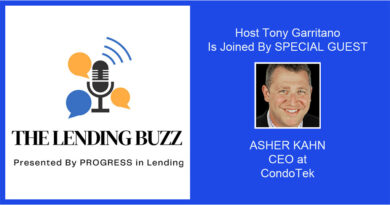Black Knight: Strong Equity Stakes Alone May Not Be Enough To Stave Off Foreclosure Starts
The Data & Analytics division of Black Knight, Inc. (NYSE:BKI) released its latest Mortgage Monitor Report, based upon the company’s industry-leading mortgage, real estate and public records datasets. Given Black Knight’s recent analysis of the strong equity positions of borrowers in forbearance, even when adding 18 months of deferred payments to their debt loads, this month’s report explores the relationship between such equity positions and downstream foreclosure start rates and – ultimately – distressed liquidations. According to Black Knight Data & Analytics President Ben Graboske, the data suggests that the healthy stores of equity in the hands of homeowners currently in forbearance may not be sufficient on its own to ward off foreclosure activity.
“An analysis of our McDash loan-level mortgage performance dataset back to 2007 shows that holding equity in one’s home might not be a blanket backstop to foreclosure activity,” said Graboske. “Borrowers with limited equity were much more likely to be referred to foreclosure during the early stages of the Great Recession than those with strong equity positions. But foreclosure start rates on homeowners who were 120 or more days past due have been relatively similar regardless of equity stakes from 2010 on, with borrowers in the strongest positions only slightly less likely to be referred to foreclosure. So, while we may see some variation in foreclosure activity based on the equity levels of borrowers who are unable to return to making payments post-forbearance, those with strong equity won’t necessarily be immune to foreclosure referral.
“The same data also shows that borrowers with strong equity stakes are more than 40% less likely to face the involuntary liquidation of their homes than borrowers with weaker equity positions, limiting both potential losses on such mortgages and distressed inflow into the housing market. Still, even among borrowers with 40% equity stakes who are referred to foreclosure, some 30% in recent years have lost their home to foreclosure sale, short sale, deed in lieu, etc. What the data doesn’t tell us is why so many people who could avoid involuntary liquidation by selling through traditional channels simply do not end up doing so. Whether that’s due to lack of understanding of their equity positions or the foreclosure process in general is unclear. But given the large number of high equity homeowners currently struggling to make their payments, this represents a significant challenge for the industry: how to educate struggling homeowners on the post-forbearance, foreclosure and – if needed – home sale processes, to limit unneeded stress on homeowners and the market alike.”
However, the report also finds that the white-hot housing market, which has driven homeowner equity to record-breaking heights, is starting to show signs of cooling. According to the Black Knight HPI, annual home price growth slowed from an all-time-high of 19.4% in July to 19% in August, marking the first decline seen in the rate of annual appreciation in 15 months. Daily tracking data from the company’s Collateral Analytics group suggests further cooling in September as well. Any slowdown in appreciation will likely be welcomed by potential homebuyers, who have seen the monthly payment required to purchase the average priced home with a 20% down 30-year fixed rate mortgage increase by nearly 20% (+$210) over the first nine months of 2021.That brings the average monthly mortgage payment to its highest level since late 2007.
It now requires 21.6% of the median household income to make the monthly mortgage payment on the average home purchase, making housing the least affordable it’s been since 30-year rates rose to nearly 5% back in late 2018. Since the Great Recession, home price growth has begun to slow when such payment-to-income ratios hit approximately 20.5% or higher, but low inventory levels in recent months have led to record home price growth even with tightening affordability. Any further rate increases – such as those seen in the week following the Federal Reserve’s announcement on tapering – will only exacerbate the affordability side of the equation. For example, should home prices and incomes hold steady, but interest rates rise to 3.5%, the average monthly payment would rise by more than $100 and home affordability would hit a 12-year low. At 4%, the payment-to-income ratio would climb above its pre-Great Recession (1995-2003) average. If rates climb back to 5% as in late 2018, it would require $380 (+29%) more per month to buy the average-priced home than it does today, with affordability reaching the lowest levels on record outside of the 2004-2008 period.

The Place for Lending Visionaries and Thought Leaders. We take you beyond the latest news and trends to help you grow your lending business.



